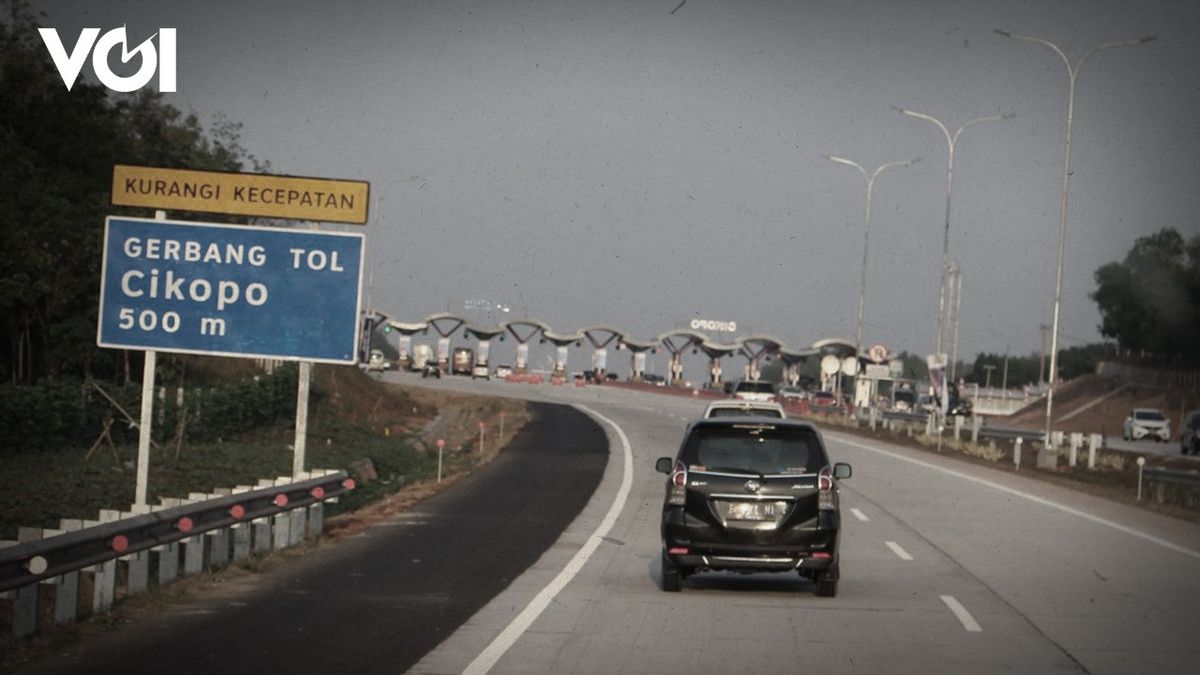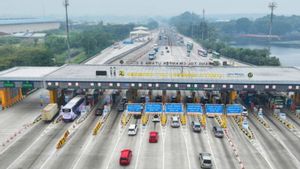Indeed, the purpose of every development is benefit. No exception is the construction of the Cikopo Palimanan (Cipali) Toll Road. This 116 kilometer long road has had major benefits in reducing travel time. But unfortunately this road is prone to accidents. But calm down, through this first edition of VOI's typical Writing Series articles, we will provide safe tips for passing the Cipali Toll Road. Here it is, "Be careful in Cipali."
Inaugurated on June 13 2015, the Cipali Toll Road is one of the longest unobstructed roads in Indonesia. The emergence of this toll road is able to cut travel time by half. Jakarta-Cirebon for example, if passing through Pantura takes 5 to 6 hours, then via the Cipali Toll the journey only takes about 2.5 hours.
Because it has a long segment, drivers passing the Cipali Toll Road often lose focus. The desire to accelerate his vehicle is rapidly increasing. Unfortunately, this is often the culprit for rear-end collisions. According to the National Transportation Safety Committee (NTSC) as quoted by Binis, the average number of accidents in Cipali occurs 36 times per month.
In December 2020, the Head of Cipali Astra Tol Cipali Traffic Management Department, Andre Yulianto, said the number of accidents on the Cipali Toll Road had decreased. From January to November 2020, there were 903 traffic accidents on the Cipali Toll Road. Meanwhile in 2019, traffic accidents on the Cipali Toll Road reached more than 1,000 cases.
From the data presented by PT Lintas Marga Sedaya (LMS), in 2016 the total accidents that occurred on the Cipali Toll Road reached 1,282 accidents, then in 2017 there were 1,381 accidents, 2018 there were 1,197 accidents.
Accidents on the Cipali Toll Road are often associated with mystical things. Moreover, at one point of the Cipali toll road, on the edge of the 182 kilometer toll road, there is a large stone on top of cast concrete called Batu Bleneng. Some of the local people believe that there is a spirit who inhabits the stone. In fact, however, there are more "plausible" reasons why the Cipali toll road accident rate is so high.

Cipali Toll Road has road conditions that tend to be straight and comfortable. This situation makes the driver complacent and increases speed. On the other hand, the straight and the length of the toll road makes drivers tired, and drivers are less alert.
When going through the Cipali Toll Road, there is actually a stipulated limit of 60-100 km per hour. However, after the West Java Regional Police used a speed gun, the average speed of vehicles on the Cipali Toll Road was between 150 and 200 km per hour, which is above average. When driving a vehicle at high speed like this, the drivers do not pay attention to fatigue and drowsiness.
As explained above, the main reason why accidents occur frequently at the Cipali Toll Road is due to human errors. Many motorists decide not to rest because they are not tired or are catching up with time. Even though rest is very important in a long journey. In addition to resting the body, rest time can also be used to check the condition of the vehicle, whether checking the condition of the tires, battery, and so on. Because it is not uncommon for tires to break on the road.
There are many resting places on the Cipali Toll. Some of them are at KM 86 B, KM 102 A, KM 130 B, and KM 166 A. Usually there are gas stations, prayer rooms, restaurants, ATMs, toilets, health services, and workshops.
There is also Parking Bay which can be used as a place to rest. However, parking bay usually depends on the traffic situation on the toll road and the congestion conditions of vehicles at the rest area. Operations will be arranged according to a decision from the local police. Parking bay is usually operated at times such as Eid homecoming.
Referring to Law Number 22 Year 2009 Article 90 Paragraphs 2,3 and 4, there is a maximum driving time limit of 8 hours a day, with an intensity of rest every 4 hours of travel. Meanwhile, for the duration of the rest, it is recommended that at least 30 minutes. Therefore, there is no other reason to postpone resting.

Quoting Kompas, Ahmad Wildan, Senior Investigator of the KNKT, has input for the government so that people drive safely on the Cipali Toll Road. "First, the promotion of safety by reminding the danger of tire bursts in each rest area," said Ahmad Wildan.
Second, Wildan suggested that markers be modified by creating a rival illusion for the driver. Wildan gave an example, by making the roads seem to be narrower by using chevron reducing markings.
"Finally, by adding a rest area in Cipali with various interesting spots for taking photos and traveling. So that people are interested in visiting the rest area as a place of entertainment, not just a place to rest, "he added.
In addition, it is better for drivers to always maintain a safe distance between vehicles. Because some drivers drive the vehicle to the maximum speed limit, it is feared that there will be a potential for sudden brakes that could trigger a rear impact. Motorists should also comply with the maximum speed limit of the Cipali Toll Road, which is 100 kilometers per hour.
The English, Chinese, Japanese, Arabic, and French versions are automatically generated by the AI. So there may still be inaccuracies in translating, please always see Indonesian as our main language. (system supported by DigitalSiber.id)













